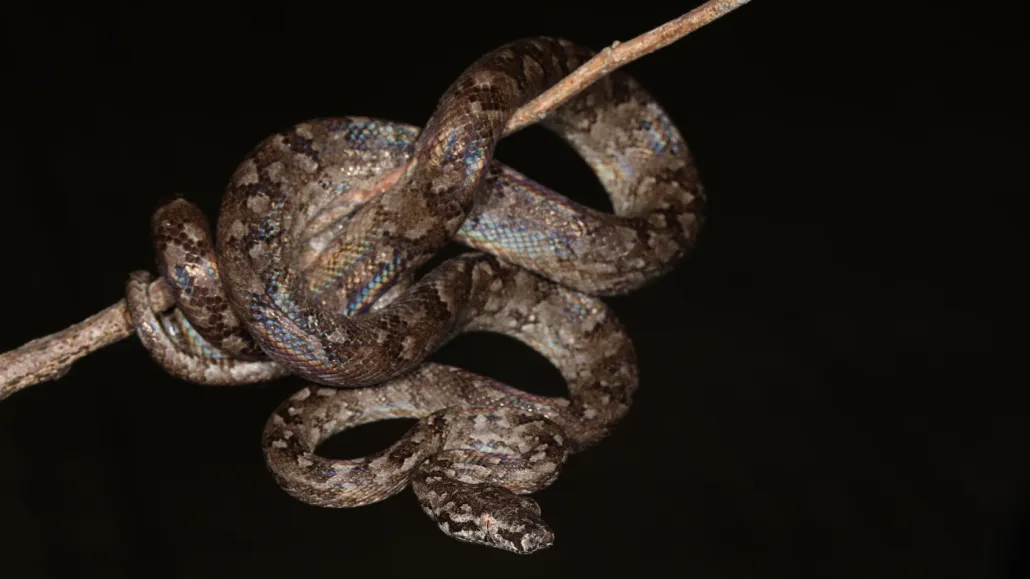
The newly described Hispaniolan vineboa (Chilabothrus ampelophis) has distinctive large eyes and zigzag coloring, which tipped off researchers that they had stumbled upon a new species, one that is among the smallest boas in the world.
© Miguel A. Landestoy T.






